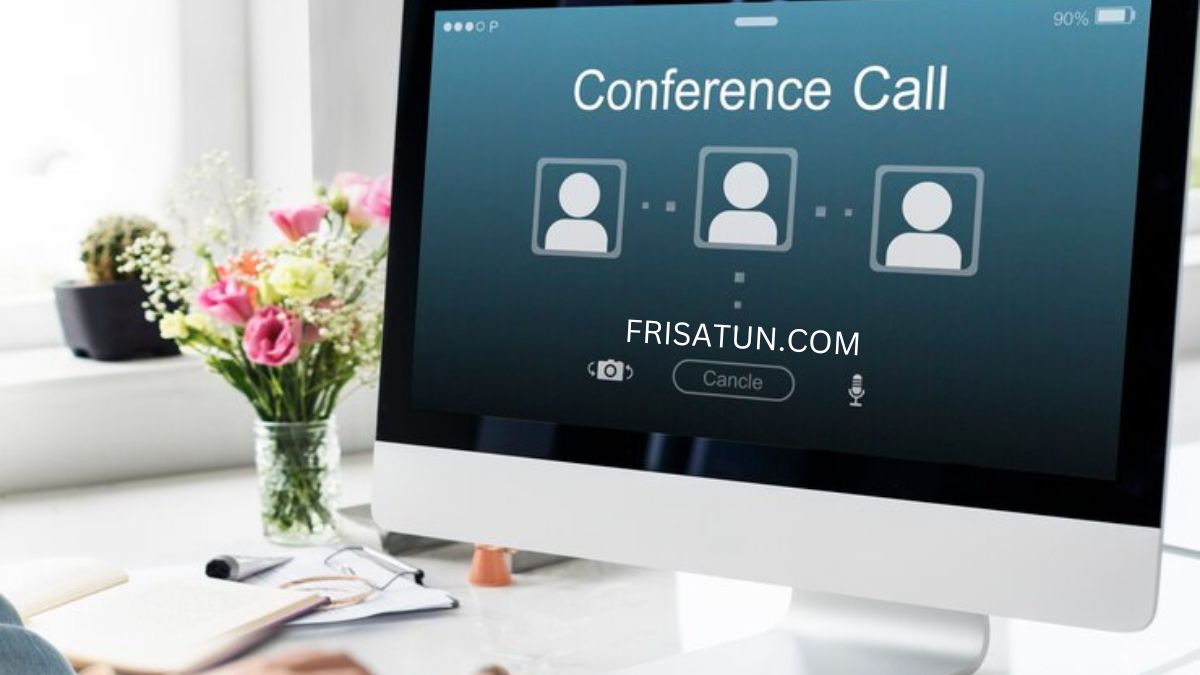NEWS
Mastering the Art of Conference Calls: Tips for Clear Communication

In today’s fast-paced business world, effective communication can make or break a team. With remote work becoming the norm, conference call have emerged as an essential tool for connecting colleagues and clients across distances. These virtual conversations allow teams to collaborate in real time, share ideas, and drive projects forward.
However, navigating the waters of conference calls isn’t always smooth sailing. Misunderstandings can arise, technical glitches may occur, and voices often get lost in the digital ether. The key to mastering this form of communication lies in understanding its nuances and implementing best practices that foster clarity.
Whether you’re a seasoned pro or new to conference calls, enhancing your skills is vital for productive discussions. Let’s explore how you can master the art of conference calling with tips that ensure clear communication every time.
Benefits of Using Conference Calls for Business Communication
Conference calls have transformed how businesses communicate. They allow teams to connect from different locations without the hassle of travel.
Cost savings are a significant advantage. By reducing travel expenses, companies can allocate resources more effectively. This is especially beneficial for startups and small businesses with tight budgets.
Flexibility is another key benefit. Participants can join from anywhere, making it easier to schedule meetings that accommodate various time zones.
Moreover, conference calls foster collaboration among team members who may not often meet in person. They create opportunities for brainstorming and decision-making in real-time.
The technology behind conference calls has also improved dramatically. High-quality audio and video features enhance clarity, making conversations smoother than ever before.
These factors combine to make conference calls an essential tool for modern business communication, supporting productivity while keeping teams connected across distances.
Common Challenges Faced During Conference Calls
Conference calls can often feel chaotic. One common challenge is the lack of visual cues. Without body language, it’s easy to misinterpret tone or intent.
Technical issues frequently disrupt conversations too. Poor audio quality, dropped connections, and software glitches can frustrate participants. These interruptions break the flow of communication and lead to misunderstandings.
Another hurdle is multitasking. Participants might be tempted to check emails or browse other tabs while on a call. This distraction affects engagement and focus.
Time zone differences also complicate scheduling for global teams. Coordinating a suitable time can result in some members feeling rushed or disengaged.
Unequal participation is an ongoing issue. Some voices dominate discussions while others struggle to contribute. This imbalance makes it difficult for all opinions to be heard and valued during the call.
Tips for Clear Communication on Conference Calls
Effective communication is crucial during conference calls. Start by preparing and testing your equipment ahead of time. Check your microphone, speakers, and internet connection to avoid disruptions.
Establish ground rules at the beginning of the call. Decide who speaks when and encourage participants to mute themselves when not speaking. This keeps background noise to a minimum.
When it’s your turn to speak, articulate your thoughts clearly and concisely. Avoid jargon unless everyone understands it; this ensures inclusivity for all attendees.
Active listening plays a vital role in successful discussions. Show engagement by acknowledging points made by others or asking follow-up questions.
Remember that technical difficulties can happen anytime. Stay calm if issues arise, as patience helps maintain professionalism during these moments.
Preparing and Testing Equipment
Before diving into a conference call, preparation is key. Ensure that your equipment is up to the task. Start by checking your microphone and speakers. Clear audio makes a world of difference.
Test your internet connection as well. A stable connection prevents interruptions and keeps everyone engaged. If you’re using video software, ensure you have good lighting too.
Don’t forget about background noise! Choose a quiet space where distractions are minimal. Consider using headphones to further enhance sound quality.
Familiarize yourself with the platform’s features ahead of time. Knowing how to mute or share screens can smoothen the flow of conversation and reduce confusion during discussions.
With everything in order, you’ll be set for an effective meeting experience right from the start.
Establishing Ground Rules
Establishing ground rules is essential for effective conference calls. It sets the tone and ensures everyone understands expectations.
Start by defining how participants will introduce themselves. This simple step fosters a sense of inclusivity, especially in larger groups.
Next, determine when to speak. Encourage using cues like raising hands or unmuting at designated times to prevent chaotic interruptions.
Time management is key as well. Set specific time limits for each agenda item to keep discussions focused and productive.
Also, remind everyone about muting their microphones when not speaking to minimize background noise. This small act can significantly enhance audio quality.
Encourage respect during conversations. Allow space for differing opinions while maintaining professionalism throughout the call. Establishing these guidelines creates a more organized environment where clear communication thrives.
Speaking Clearly and Concisely
Speaking clearly and concisely is crucial during a conference call. It helps convey your message without confusion.
Start by organizing your thoughts beforehand. Know what you want to say and stick to key points. Avoid rambling, as it can lead to misunderstandings.
Use simple language that everyone can understand. Jargon may confuse participants who are not familiar with industry terms. Keep sentences short for better clarity.
Pacing matters too; speak neither too fast nor too slow. A steady rhythm allows listeners to absorb information easily.
Also, remember the importance of tone and expression. Even over the phone, enthusiasm or concern can be conveyed through vocal emphasis.
Encourage questions throughout the conversation to ensure understanding and engagement from all participants.
Active Listening
Active listening is a key component of effective communication during conference calls. It goes beyond just hearing the words spoken; it involves fully engaging with the speaker.
Make eye contact, even if it’s virtual. This creates a sense of connection and shows that you’re attentive.
Nod or use verbal affirmations like “I see” or “That makes sense.” These cues encourage the speaker and clarify your understanding.
Avoid distractions. Silence notifications on your devices and close unrelated tabs to ensure you’re focused solely on the call.
Taking notes can also enhance active listening. Jot down important points or questions as they arise so you can contribute meaningfully when it’s your turn to speak.
Remember, active listening fosters collaboration and helps build trust among team members, making discussions more productive and insightful for everyone involved.
Dealing with Technical Difficulties
Technical difficulties can derail even the most organized conference call. Anticipating issues before they arise is crucial.
Always have a backup plan in place. This could mean having an alternative platform ready or ensuring everyone knows how to reach you via instant messaging if the audio fails.
Encourage participants to mute their microphones when not speaking. This reduces background noise and minimizes disruptions during discussions.
If a problem occurs, stay calm and composed. A brief pause for troubleshooting can save time in the long run. Communicate clearly about what’s happening so everyone remains informed.
Don’t hesitate to ask for assistance from IT support if available. They often have tools that can quickly resolve connectivity issues or software glitches.
By fostering an environment of patience and understanding, you create a smoother experience for all involved despite technical hiccups that may arise.
Best Practices for Productive Conference Calls
To ensure a productive conference call, always set a clear agenda beforehand. Share it with participants to keep everyone on the same page. This helps in steering conversations and avoiding tangents.
Encourage participation from all attendees. Invite quieter members to share their thoughts. This fosters inclusivity and can lead to valuable insights.
Time management is essential. Stick to the scheduled time for each topic discussed, ensuring that no single point drags on excessively.
Make use of visual aids when possible. A shared screen or presentation can enhance understanding and engagement among participants.
Follow up after the call by summarizing key points and action items in an email. This reinforces accountability and provides clarity moving forward.
Consider rotating facilitators for future calls. Different perspectives can energize discussions and bring fresh ideas into play.
Conclusion
Mastering conference calls can transform your business communication. When done right, these virtual meetings create opportunities for collaboration and innovation.
Invest time in preparation. Ensure all participants are equipped with the necessary tools and understand the agenda beforehand.
Fostering an environment where everyone feels heard is crucial. Encourage open dialogue and be mindful of each voice on the call.
Remember to stay adaptable. Technical issues may arise, but with a calm approach, they can often be resolved quickly.
Enhancing your conference call skills contributes to effective teamwork and clearer understanding among colleagues. Embrace these practices to elevate every discussion you hold remotely.
FAQs
What is a conference call?
A conference call is a telephone call where multiple participants can join the conversation simultaneously. This method of communication allows teams to connect from different locations, making it ideal for remote work.
How do I set up an effective conference call?
To set up an effective conference call, choose a reliable platform that supports your needs. Schedule the meeting in advance and send out invitations with clear details about the time, agenda, and any necessary access codes or links.
What equipment do I need for a successful conference call?
Basic equipment includes a computer or smartphone with internet access and audio capabilities. A good quality microphone and headphones can enhance sound clarity. Testing your setup beforehand ensures everything works smoothly.
Can I improve my speaking skills during calls?
Yes! Practicing clear articulation and pacing will help you communicate more effectively during calls. Recording yourself while practicing can also provide helpful feedback on areas for improvement.
How should I handle distractions during a conference call?
Minimizing background noise is crucial. Find a quiet environment to take your calls, mute yourself when not speaking, and encourage others to do the same to avoid interruptions.
Are there tools available for managing larger conference calls?
Absolutely! Many platforms offer features like screen sharing, chat functionalities, and participant management options that make coordinating larger meetings easier.
NEWS
Rhode Island Motorcycle Accident Law Firm: Your Comprehensive Guide

Motorcycle accidents can be devastating, often leading to serious injuries, costly medical bills, and complex legal battles. If you’re a motorcyclist in Rhode Island, understanding your legal options after an accident is crucial. This guide provides insights into how a Rhode Island motorcycle accident law firm can support you in navigating the legal system, ensuring you receive fair compensation and justice. From understanding your rights to selecting the best law firm, we cover everything you need to know. Read on to empower yourself with the knowledge to protect your interests.
Motorcycle Accidents in Rhode Island
Common Causes of Motorcycle Accidents
Motorcycle accidents can happen for various reasons, but some of the most common causes include:
- Distracted driving: Texting, phone calls, or other distractions can lead to drivers not noticing motorcyclists on the road.
- Speeding: Excessive speed reduces reaction time, increasing the risk of collisions.
- Impaired driving: Driving under the influence of alcohol or drugs can significantly impair a driver’s ability to operate their vehicle safely.
- Lane splitting: While not legal in Rhode Island, motorcyclists may engage in lane splitting, which can be dangerous and lead to accidents.
- Road hazards: Potholes, wet roads, and debris can be more hazardous for motorcycles than for cars.
Understanding Rhode Island Traffic Laws for Motorcyclists
Rhode Island has specific laws that apply to motorcyclists. Being aware of these can not only keep you safe but also strengthen your legal case if you’re involved in an accident. Key regulations include:
- Helmet requirement: All motorcyclists must wear helmets, and passengers under 21 are required to wear helmets by law.
- Motorcycle licensing: Riders must possess a valid motorcycle license or endorsement.
- Safety inspections: Motorcycles are subject to regular safety inspections to ensure they are roadworthy.
How a Rhode Island Motorcycle Accident Law Firm Can Help
Immediate Legal Support
After an accident, the priority is to get medical assistance. However, it is also important to secure legal support as soon as possible. A Rhode Island motorcycle accident law firm can help by:
- Evaluating your case: Determining whether you have grounds for a personal injury claim.
- Gathering evidence: Collecting photos, police reports, and witness statements that strengthen your case.
- Advising on insurance claims: Guiding you through the process of filing claims with your or the at-fault party’s insurance company.
Negotiating with Insurance Companies
Insurance companies often try to minimize payouts, but experienced motorcycle accident lawyers know the tactics they use and can negotiate on your behalf. They can:
- Assess the true value of your claim: Including medical expenses, lost wages, property damage, and pain and suffering.
- Prevent quick settlement traps: Ensuring you don’t accept a lowball offer from an insurance adjuster who is looking to settle quickly.
- Negotiate for maximum compensation: Leveraging evidence and legal knowledge to get the best possible settlement for you.
Representing You in Court
While many cases are settled out of court, sometimes negotiations break down. In such situations, a law firm can:
- File a lawsuit: Taking legal action if an insurance company refuses to offer fair compensation.
- Represent you in trials: Providing experienced courtroom representation to fight for your rights.
- Handle appeals: If necessary, they can also handle appeals to seek a favorable outcome.
What to Look for in a Rhode Island Motorcycle Accident Law Firm
Experience and Specialization
When choosing a law firm, ensure they specialize in motorcycle accidents and have a strong track record of success in this field. Experienced attorneys understand the nuances of motorcycle accident cases and are better equipped to handle complex legal situations.
Reputation and Client Testimonials
A law firm’s reputation can give you an idea of the quality of service you can expect. Look for firms with positive client testimonials and good reviews. Successful cases and satisfied clients are indicators of a law firm’s reliability and effectiveness.
Communication and Availability
You want an attorney who is accessible and communicates effectively. A responsive legal team ensures you are kept in the loop at all stages of your case, providing peace of mind and reducing stress during a challenging time.
Steps to Take After a Motorcycle Accident
Seek Medical Attention
Your health and safety are the top priorities. Even if you don’t feel seriously injured, see a doctor. Some injuries may not be immediately apparent but could become more serious if left untreated.
Document the Scene
Take photos of the accident scene, your injuries, and the damage to your motorcycle. This visual evidence can be crucial for building your case.
Obtain Contact Information
Get the contact information of other drivers, witnesses, and any law enforcement officers at the scene. This information is vital for your lawyer when they begin gathering evidence.
Contact a Motorcycle Accident Lawyer
The sooner you get in touch with a law firm, the better. Early legal intervention can preserve evidence, help you avoid costly mistakes, and improve your chances of receiving fair compensation.
Conclusion
Being involved in a motorcycle accident is a traumatic experience, but with the right legal support, you can navigate the complexities of insurance claims, lawsuits, and compensation. Choosing a reputable Rhode Island motorcycle accident law firm is crucial to protecting your rights and securing a fair settlement. If you or a loved one has been in a motorcycle accident, don’t hesitate to reach out to an experienced lawyer who can guide you through every step of the process.
Have you been injured in a motorcycle accident in Rhode Island? Contact our experienced legal team today for a free consultation. Let us fight for the compensation you deserve.
FAQs
What should I do immediately after a motorcycle accident?
Seek medical help, document the scene, collect contact information, and contact a motorcycle accident lawyer as soon as possible.
How much compensation can I get from a motorcycle accident claim?
The amount varies depending on factors like the severity of injuries, the extent of property damage, and the impact on your quality of life. A lawyer can give a more accurate estimate after assessing your case.
Can I file a claim if I was partially at fault for the accident?
Yes, Rhode Island follows a “comparative negligence” rule, which means you can still recover compensation even if you were partially at fault, but the amount may be reduced based on your percentage of fault.
How long do I have to file a lawsuit after a motorcycle accident in Rhode Island?
The statute of limitations in Rhode Island for personal injury cases is generally three years from the date of the accident. It’s best to consult a lawyer as soon as possible to avoid missing this deadline.
Why should I hire a specialized motorcycle accident law firm?
Specialized firms have the experience and expertise needed to handle the unique aspects of motorcycle accident cases, such as road hazards and vehicle visibility issues, which can significantly affect the outcome of your claim.
NEWS
Meet the Press S76E49: Key Takeaways, Highlights, and Analysis from the Latest Episode

The latest episode of Meet the Press, Season 76, Episode 49 (S76E49), has been a must-watch for anyone keen on understanding the current political landscape. With candid discussions, expert opinions, and in-depth interviews, this episode covers crucial topics that impact both national and global affairs. If you missed it or need a refresher, you’re in the right place! In this blog post, we’ll break down the key moments, provide insightful analysis, and share the episode’s highlights. Stay with us to uncover what was said, what it means, and why it matters.
Episode Overview
Meet the Press has been a staple in American political discourse, bringing in influential voices to discuss pressing issues. Episode S76E49 continues this tradition, offering insights on critical matters ranging from domestic policy to international relations. This episode featured interviews with top political figures, thought leaders, and subject matter experts, shedding light on topics that are on everyone’s minds.
Key Details from the Episode:
- Air Date: October 20, 2024
- Host: Kristen Welker
- Topics Covered: U.S. election outlook, international diplomacy, economic forecasts, and more.
Main Topics and Analysis:
A. U.S. Election Outlook: The 2024 elections are approaching fast, and this episode focused heavily on the latest developments. The host interviewed political analysts to assess the strategies of major candidates, voter sentiment, and key swing states that could decide the election.
Key Insights:
- Polls show tight races in several states, indicating that every vote will count.
- Campaign strategies are shifting, with an increased focus on digital engagement and grassroots movements.
- Election integrity and the role of technology in voting were also discussed.
International Diplomacy: The episode didn’t shy away from global issues, particularly U.S. relations with key international players. Interviews with foreign policy experts highlighted recent developments in diplomacy, trade agreements, and conflict zones.
Key Insights:
- The U.S. is engaging in talks with allies to address global economic challenges.
- Recent tensions in [Region] and their impact on international trade were explored, offering expert perspectives on potential resolutions.
- The discussion also covered the implications of changing diplomatic ties for national security.
Economic Forecasts and Inflation: With inflation rates remaining a hot topic, the episode invited economic experts to share their projections. Discussions revolved around how current economic policies might affect inflation, employment, and overall economic stability in the coming months.
Key Insights:
- Experts predict a slow but steady decline in inflation, though challenges remain.
- The role of Federal Reserve policies and government spending was dissected to understand their long-term impact on the economy.
- Viewers gained practical insights into what these trends mean for everyday Americans.
Exclusive Interviews:
One of the standout features of Meet the Press S76E49 was its line-up of guests. The episode included interviews with high-profile political figures and experts, offering viewers diverse perspectives on the issues discussed.
Interview Highlights:
- [Name of Political Figure]: Shared insights on [specific issue], emphasizing [key point].
- [Name of Expert]: Provided an analysis of [economic/political topic], predicting [future scenario].
- [Name of Guest]: Discussed the role of [policy] in shaping the future of [specific field].
These conversations provided clarity on complex topics, making the episode a valuable watch for anyone looking to stay informed.
Key Takeaways:
If there’s one thing you should know from Meet the Press S76E49, it’s that the political landscape is more dynamic than ever. Here are the main takeaways:
- Election Dynamics: Close races in key states mean voter turnout will be more crucial than ever.
- Global Cooperation: Diplomatic ties continue to evolve, affecting trade and security.
- Economic Outlook: Inflation concerns are being addressed, but vigilance is needed to ensure long-term stability.
Visual Recap:
Embed Image: Chart of current polling data showing swing states. Embed Infographic: Summary of top economic trends discussed in the episode.
Visual elements such as charts and infographics help break down complex information, making it easier to understand the broader picture. They also enhance the blog’s SEO and engagement metrics by encouraging readers to spend more time on the page.
Conclusion
Meet the Press S76E49 was an informative episode packed with valuable insights on current political and economic issues. Whether you’re a political enthusiast or just trying to stay updated, understanding these discussions is crucial. Be sure to tune in to future episodes for more in-depth coverage and expert opinions. We’ll keep you informed with the latest recaps and analyses right here on our blog!
FAQs
When did Meet the Press S76E49 air?
The episode aired on October 20, 2024.
Who hosted this episode?
Kristen Welker was the host of Meet the Press S76E49.
What were the main topics discussed?
The main topics included the 2024 U.S. election outlook, international diplomacy, and economic forecasts.
Who were some of the guests on this episode?
The episode featured interviews with political figures, analysts, and subject matter experts, providing diverse perspectives on key issues.
How can I watch Meet the Press S76E49?
You can catch the full episode on the official Meet the Press website or through streaming services that carry NBC content.
NEWS
Everything You Need to Know About MYSDMC SSO: Simplify Your School Login Experience

In today’s digital world, managing multiple logins for various educational platforms can be overwhelming. Fortunately, the MYSDMC SSO (Single Sign-On) system offers a streamlined, efficient solution for students, parents, and teachers in the Manatee County School District. Whether you’re logging in for the first time or you’re a seasoned user, this guide will provide everything you need to know about MYSDMC SSO, including how it works, its benefits, and troubleshooting tips. By the end, you’ll have a clear understanding of how this system simplifies access to essential educational tools and resources, making online learning and management a breeze.
What is MYSDMC SSO?
MYSDMC SSO stands for Manatee County School District’s Single Sign-On system. This system enables users to access multiple educational platforms, services, and applications using a single set of login credentials. Whether you’re a student needing to check your assignments, a parent reviewing your child’s progress, or a teacher preparing lesson plans, MYSDMC SSO provides a seamless way to log in without juggling multiple usernames and passwords.
Benefits of Using MYSDMC SSO:
- Convenience: No need to remember multiple logins. One username and password give you access to all necessary educational tools.
- Time-Saving: Fast and efficient login process, reducing the time spent on authentication.
- Enhanced Security: Protects user data with strong authentication protocols, reducing the risk of unauthorized access.
- Accessibility: Available on various devices, making it easier to log in from anywhere, whether at school, home, or on the go.
How to Log In to MYSDMC SSO: A Step-by-Step Guide
Open Your Browser:
Start by opening your preferred web browser on your computer, tablet, or smartphone.
Visit the MYSDMC SSO Portal:
Go to https://launchpad.classlink.com/manateeschools. This is the official login page for MYSDMC SSO.
Enter Your Credentials:
Input your username (usually provided by your school) and password. If it’s your first time logging in, you might be prompted to set up your account with additional information.
Access Your Dashboard:
Once logged in, you’ll see a dashboard with various apps and tools. Click on the icons to access the services you need.
Log Out Securely:
When finished, always log out, especially if using a shared device, to protect your account information.
Pro Tip: Save the MYSDMC SSO portal as a bookmark for quick access in the future.
Troubleshooting Common MYSDMC SSO Issues
Forgot Your Password?
Use the “Forgot Password” link on the login page. Follow the steps to reset your password, which usually involves verifying your identity via email or security questions.
Account Locked Out?
After several failed login attempts, your account may be temporarily locked. Contact the IT support team at your school for assistance in unlocking it.
Browser Compatibility Issues:
If you’re having trouble logging in, try clearing your browser’s cache or switching to a different browser. MYSDMC SSO works best on updated versions of Chrome, Firefox, or Safari.
Problems with Multi-Factor Authentication (MFA):
Ensure you have access to the device where MFA codes are sent. If you’ve lost access, reach out to technical support to reset your authentication settings.
Why MYSDMC SSO is Important for Students, Teachers, and Parents
For Students: MYSDMC SSO centralizes access to educational apps like Google Classroom, Zoom, and other online resources. Students can quickly check assignments, participate in virtual lessons, and manage their learning materials all in one place.
For Teachers: Teachers benefit from quick access to grading systems, attendance tracking, and educational resources, enabling them to focus more on teaching rather than managing multiple logins.
For Parents: Parents can stay informed about their child’s progress by easily accessing platforms like the parent portal, monitoring grades, attendance, and communication with teachers.
Additional Tips for Maximizing MYSDMC SSO Experience:
- Regularly Update Your Password:
- It’s a good habit to change your password periodically to enhance security.
- Enable Notifications:
- Keep notifications enabled to stay updated on assignments, announcements, and important deadlines.
- Customize Your Dashboard:
- Arrange your frequently used apps on the dashboard for quicker access. You can drag and drop to reorganize icons based on your preference.
How MYSDMC SSO Compares to Other Systems
MYSDMC SSO is comparable to other education-centric systems like ClassLink and Clever but stands out for its tailored integration with the Manatee County School District’s unique educational needs. While other platforms offer similar features, MYSDMC is optimized for the specific tools and services used within the district, making it a go-to solution for students, parents, and educators in the area.
Conclusion
MYSDMC is a powerful tool that simplifies the digital learning experience for everyone in the Manatee County School District. Whether you’re a student accessing assignments, a teacher managing resources, or a parent monitoring academic progress, MYSDMC makes everything more accessible and secure. Ready to streamline your educational journey? Visit the MYSDMC SSO portal today and experience the ease of a single sign-on system.
FAQs
What is MYSDMC ?
MYSDMC is a Single Sign-On system for the Manatee County School District, allowing users to access multiple educational tools with one set of credentials.
How do I reset my MYSDMC password?
Click the “Forgot Password” link on the login page and follow the instructions to reset your password.
Can I access MYSDMC on my phone?
Yes, MYSDMC is mobile-friendly and can be accessed on smartphones and tablets via your browser.
What should I do if my account is locked?
Contact the IT support team at your school to have your account unlocked.
Is MYSDMC secure?
Yes, MYSDMC uses strong security measures, including encryption and multi-factor authentication, to keep your data safe.

 CRYPTO3 months ago
CRYPTO3 months agoCrypto-Engine.Pro Blog: Your Go-To Source for Crypto Trading Insights

 GENERAL3 weeks ago
GENERAL3 weeks agoUnderstanding TNA Board: A Comprehensive Guide for Beginners

 GENERAL4 months ago
GENERAL4 months agoEverything You Need to Know About NSFW411: The Ultimate Guide

 ENTERTAINMENT4 months ago
ENTERTAINMENT4 months agoExploring Mywape: Your Guide to Quality Vaping

 FOOD5 months ago
FOOD5 months agoExploring the Benefits of süberlig: A Comprehensive Guide

 BLOG4 months ago
BLOG4 months agoDiscover the Secrets Behind the /vital-mag.net blog: A Closer Look at the Popular Blog

 FOOD5 months ago
FOOD5 months agoUnveiling the Beauty of Tamisie: A Guide to this Exquisite Fabric

 ENTERTAINMENT4 months ago
ENTERTAINMENT4 months agoNavigating Erome: Tips and Tricks for a Safer Experience on Adult Platforms





















